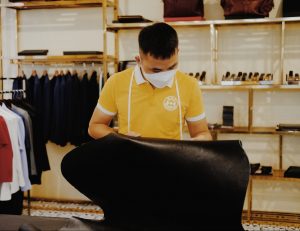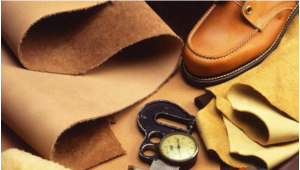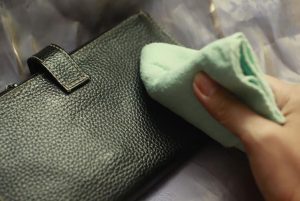Knowledge of tanned leather- Leather connoisseurs should know
A genuine leather connoisseur will surely have an endless passion for leather products, always dreaming of owning Real Leather, Stylish and Stylish. In particular, leather is the most popular leather line chosen by units to create leather fashion collections. So, what is tanned leather? What characteristics does it have? HAT+ will answer your questions
Tanned leather definition
Tanned leather is a material with high strength and flexibility. It is created based on the process of tanning leather from the skins of animals such as buffalo, cow, crocodile, goat, sheep… The most popular of which is cowhide leather with many other methods and processes. to create the best quality products.

Two types of tanning methods
As you all know, to get the soft leather bags and wallets that we are using is a meticulous process. In it, it is not possible to mention the process of belonging. Going through a pre-processing stage to make the hide clean and easy to absorb chemical or natural substances, then the raw hide is processed into leather used in fashion, can default and many other companies together. Here are the two types of tanning methods: Chrome tanning and Vegetable tanning:
1. Chrome tanning
Chrome tanning is the use of chemicals in the tanning process. The most common substance is chromium tanning. People put chromium in the tank and soak the skin for a while so that the chemicals can penetrate into the skin. This method produces a blue leather product.
Currently on the market, up to 85% of products use the chromium tanning method thanks to its speed and convenience, usually it only takes a day to complete. Therefore this method is very popular in the field of tanning.

2. Vegetable tanning
Vegetable tanning uses tannins – substances naturally extracted from trees such as oak, chestnut, etc. Tannins bind proteins in the leather and coat them, making them less water soluble and resistant. bacterial attack. This tanning process also causes the piece of leather to discolor and can be used for many purposes.
Vegetable tanning usually takes several weeks

Leather tanning process
STEP 1: PRE-TANNING
Soaking – When the leather arrives at the tannery it may be soaked to extrude salts used in preserving leather. This is done in revolving drums which can hold up to 200 hides.
Liming – Hair and epidermis are removed and a solution of lime (calcium hydroxide) and sodium sulfide is applied to soften and enhance the hide for softness and flexibility needed for upholstery leather.
Splitting – The hide is split into layers. The top, or grain, layer will produce a fine, smooth grain leather. The bottom is used for suede or split leather for other uses.
STEP 2: TANNING
This is the process which converts pre-tanned hide into leather.
Mineral tanning is normally done with alkaline chrome-3 salts. It penetrates the hide fairly quickly (24-48 hours). This results in a pale duck-egg blue, which, after processing, yields a fine, soft, modern finish. When there is absence of chromium tanning, other methods combine vegetable with polymers and syntans as an alternative.
STEP 3: SELECTING
After tanning, excess water is removed from the hide. Hides are then graded according to the quantity and locations of natural features and flaws. Aniline and Nubuck leathers demand the best quality hides. Heavily coated or embossed leather can utilize a lesser quality of hides.
STEP 4: DRESSING
Dressing the hides involves the following:
- Shaving – Hides are given a uniform thickness.
- Dyeing – Dyes are added to color leather.
- Re-tanning – Additional tanning substances are sometimes added to modify the physical characteristics of the leather to suit its final use.
- Setting – A process which mechanically removes creases and excess water.
- Drying – The hides are stretched dried on large frames or vacuum dried.
- Trimming- The rough and ragged edges are removed.

STEP 5: FINISHING
The purposes of finishing are:
- To minimize the appearance of grain blemishes without losing the natural beauty of the leather product.
- To give the required degree of gloss.
- To ensure the leather is soft, malleable and moldable.
- To give a more protective surface.
- To provide a surface that can be easily cleaned.
- To give special effect such as an antique look.







 Zalo
Zalo